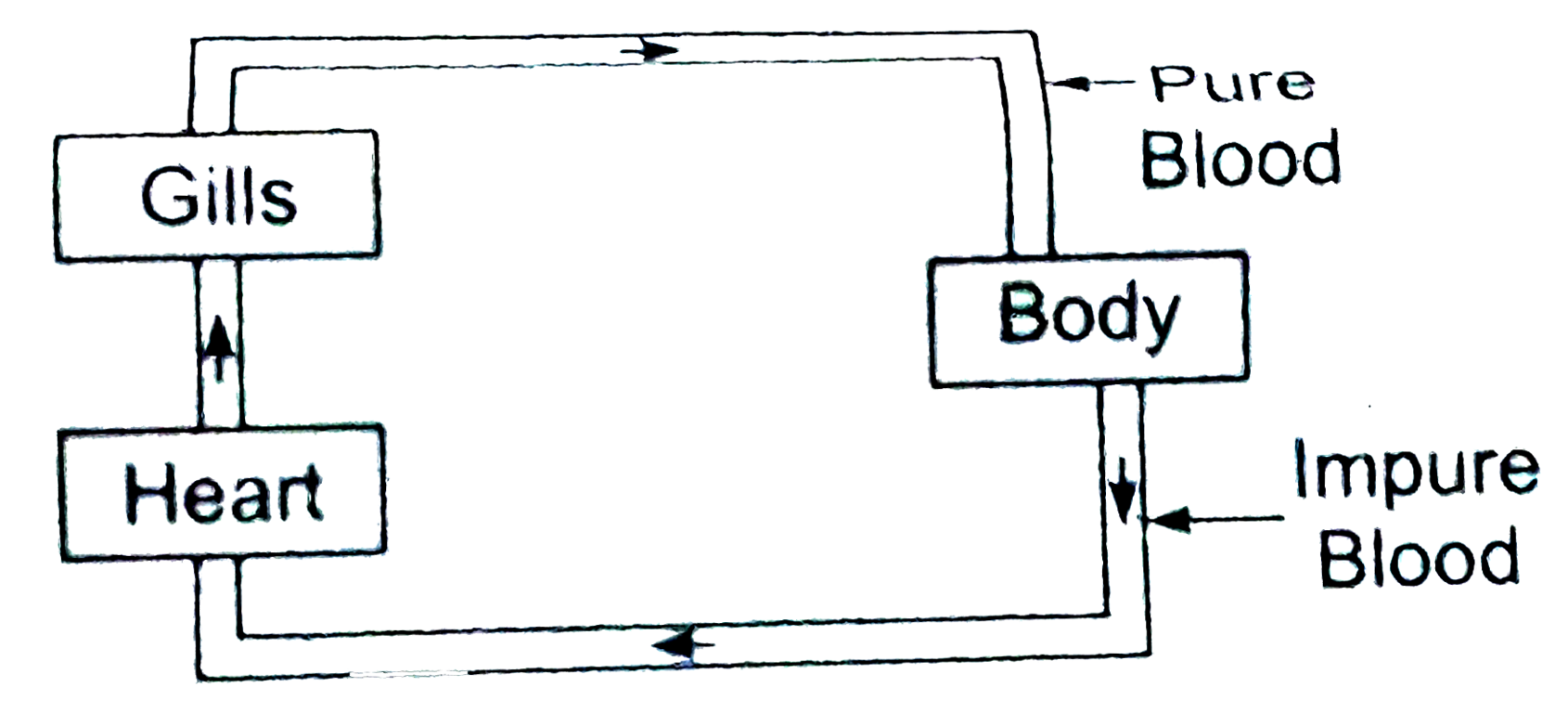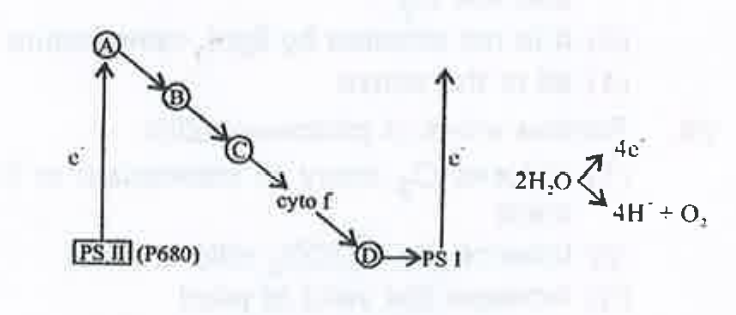Choose the schematic diagram which properly respresents pulmonary circulation in humans.
Left auricle Deoxygenated−−−−−−−−−−→blood Lungs Oxygenated−−−−−−−−−→blood Right ventricle
Let auricle Oxygenated−−−−−−−−−→blood Lungs Deoxygenated−−−−−−−−−−→blood Right ventricle
Right ventricle Deoxygenated−−−−−−−−−−→blood Lungs Oxygenated−−−−−−−−−→blood left auricle
Right ventricle Oxygenated−−−−−−−−−→blood Lungs Deoxygenated−−−−−−−−−−→blood left auricle
The correct Answer is:C
To choose the schematic diagram that properly represents pulmonary circulation in humans, we need to understand the flow of blood between the heart and the lungs. Here is a step-by-step breakdown of the pulmonary circulation process:
1. Understanding Pulmonary Circulation:
- Pulmonary circulation refers to the movement of blood between the heart and the lungs. It is responsible for oxygenating the blood.
2. Starting Point - Right Atrium:
- The process begins in the right atrium of the heart. This chamber receives deoxygenated blood from the body through the superior vena cava and inferior vena cava.
3. Right Ventricle:
- From the right atrium, blood flows into the right ventricle. The right ventricle is responsible for pumping this deoxygenated blood to the lungs.
4. Pulmonary Artery:
- The right ventricle sends the deoxygenated blood through the pulmonary artery to the lungs. This is the only artery that carries deoxygenated blood.
5. Gas Exchange in the Lungs:
- In the lungs, the blood undergoes gas exchange, where it releases carbon dioxide and absorbs oxygen. This process oxygenates the blood.
6. Pulmonary Vein:
- The now oxygenated blood returns to the heart via the pulmonary veins. This is the only vein that carries oxygenated blood.
7. Left Atrium:
- The oxygenated blood enters the left atrium of the heart through the pulmonary veins.
8. Left Ventricle:
- From the left atrium, blood moves into the left ventricle, which then pumps the oxygenated blood out to the rest of the body through the aorta.
Conclusion:
To summarize, the correct schematic diagram should illustrate the flow of blood starting from the right atrium, moving to the right ventricle, then to the lungs via the pulmonary artery, returning to the left atrium through the pulmonary veins, and finally entering the left ventricle.
- Pulmonary circulation refers to the movement of blood between the heart and the lungs. It is responsible for oxygenating the blood.
- The process begins in the right atrium of the heart. This chamber receives deoxygenated blood from the body through the superior vena cava and inferior vena cava.
- From the right atrium, blood flows into the right ventricle. The right ventricle is responsible for pumping this deoxygenated blood to the lungs.
- The right ventricle sends the deoxygenated blood through the pulmonary artery to the lungs. This is the only artery that carries deoxygenated blood.
- In the lungs, the blood undergoes gas exchange, where it releases carbon dioxide and absorbs oxygen. This process oxygenates the blood.
- The now oxygenated blood returns to the heart via the pulmonary veins. This is the only vein that carries oxygenated blood.
- The oxygenated blood enters the left atrium of the heart through the pulmonary veins.
- From the left atrium, blood moves into the left ventricle, which then pumps the oxygenated blood out to the rest of the body through the aorta.
To summarize, the correct schematic diagram should illustrate the flow of blood starting from the right atrium, moving to the right ventricle, then to the lungs via the pulmonary artery, returning to the left atrium through the pulmonary veins, and finally entering the left ventricle.
Topper's Solved these Questions
- BODY FLUIDS AND CIRCULATIONBOOK - NCERT FINGERTPS ENGLISHCHAPTER - BODY FLUIDS AND CIRCULATIONEXERCISE - HOTS
5 Videos
- BODY FLUIDS AND CIRCULATIONBOOK - NCERT FINGERTPS ENGLISHCHAPTER - BODY FLUIDS AND CIRCULATIONEXERCISE - EXEMPLAR
16 Videos
- BIOMOLECULESBOOK - NCERT FINGERTPS ENGLISHCHAPTER - BIOMOLECULESEXERCISE - Biomolecules
137 Videos
- BREATHING AND EXCHANGE OF GASESBOOK - NCERT FINGERTPS ENGLISHCHAPTER - BREATHING AND EXCHANGE OF GASESEXERCISE - Breathing And Exchange Of Gases
140 Videos
Similar Questions
Which one represents pulmonary circulation ?
View SolutionCirculation in Human is :−
View SolutionWrite a short note on pulmonary circulation.
View SolutionChoose the diagram which correctly depicts anaphase I
View SolutionThe given diagram represents circulation in

View SolutionIn the schematic diagram given, which is plastocyanin ?

View SolutionDescribe the importance of pulmonary circulation.
View SolutionHow does blood circulate in human body?
View SolutionWhich of the following represents systemic circulation ?
View SolutionThe path which the blood flows through during pulmonary circulation is :
View Solution
